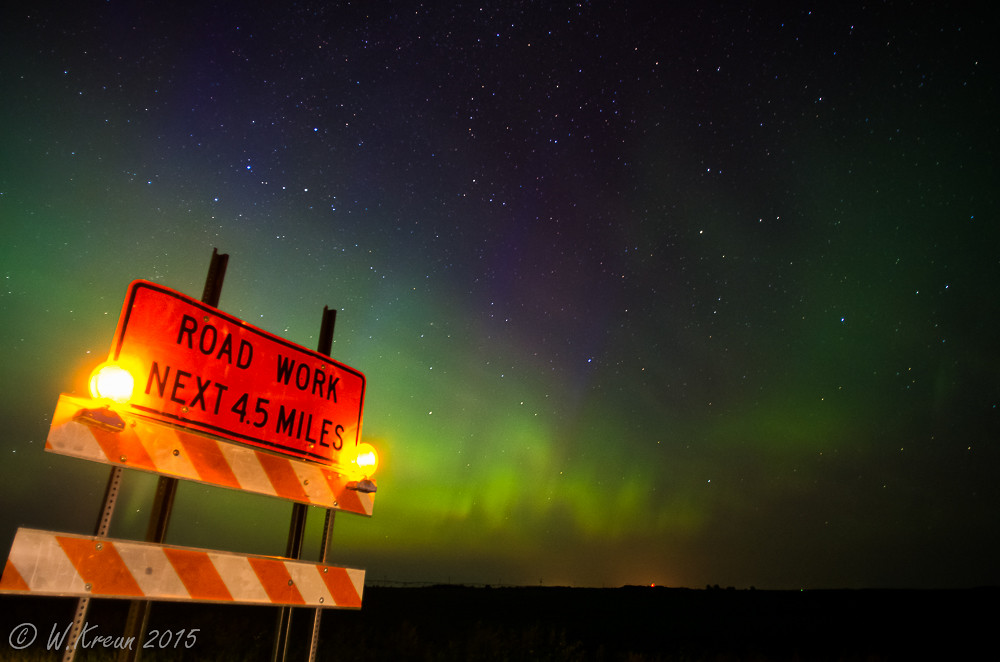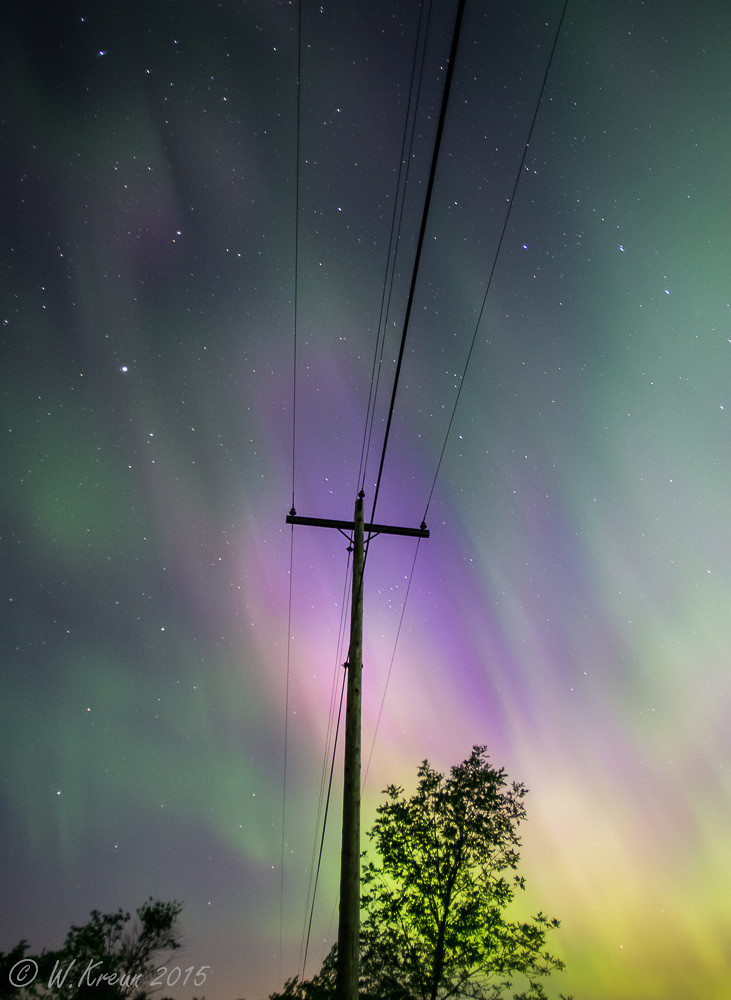As an inhabitant of northern Norway perhaps I should give you some advices. My first Pentax was a ME - more than 30 years ago. At that time I lived in Svanvik, 200 meter from the Russian border, at the northeastern edge of Norway. Up there it was extremely much northern light during the winter. Now I'm living at Dønna, an island 120 km south of Lofoten. The 2nd picture on
this tourist webpage for Northern Norway ("the island of Lovund") is taken from a small mountain 2 km from where I am now. After arrival you will see the same island.
Lofoten is located at the
68th and
69th parallels north , and then you're north of 99% of Alaska and Siberia. Still, you should have been one step further north. Don't disunderstand, both Lofoten and Dønna has a lot of northern light but still not as much as in Finnmark, the most northern region of Norway. On the other hand, Lofoten is perfect (better than Finnmark), for the other elements of your motif; mountains, sea, lakes.... I am sure you've already seen a lot of pictures of Lofoten.
My main advice is to get out into the nature. Avoid other sources of light and try to get into complete darkness. Be aware that northern lights very often behaves more like clouds during a windy day. Sometimes they are stable but most of the time it's like on a theatre; it's on and off, lights are changing, the volume up... move 5-10 degrees to the right, then a few minutes later it gradually disappear... Then bang, its coming back but then 45 degrees to the left. This can occure for hours or just a few minutes. As you probably already know, optimal time is before sunrise and after sunset. At
this norwegian webpage you can see the time of sunrise and sunset for October in Svolvær, the largest "Town" of Lofoten. The 1st of October sunrise is 07:13 and sunset 18:28. (Below you will find link for September). Next column is for length of day, then 3 colums for darkness ("tussmørke"). Astronomic, Natural and Ordinary. Because you're up in polar area the sunrise and -set takes much longer time than down in the middle of Europe. Due to that we have 3 categories of darkness. (Like we have 20 different names of snow). Press the link on the third column for the 1st of October (called (263°) and you will see that the sun is just a few degrees below the horizon at the middle of the night. If you get up at 6 AM in Lofoten the 1st of Oct. then you're most probably too late! If this is the main reason for the journey then I would have brought with me a sleeping bag and a tent. In Norway everybody are free to stay where ever they want - as long as you are out in the nature (outside farmland). Hotels/hostels are located in the small towns. 10-20 minutes biking or/and half an hours walk is a "must" to get to optimal places for using your Pentax to grab the northern lights. Why not then just stay out in the nature? Tip; put an advertisement in the local
newspaper "Tourist pays 30 Euro to rent a tent, sleeping bag + + for 10 days in Lofoten" Write the head in Norwegian; "Turist betaler 250 kr for å leie telt, sovepose, underlag + + i 10 dager" and then go on in english. Print an interim email by Google etc. to get in touch with you. This is just a proposal. Perhaps you have already paid for the hotel...
Here you will find som pictures taken by a man in Tromsø.
An Observatory of Aurora up at Svalbard have a Auroral forecast service by an
Android software. Lofoten is within their covered area but I don't know anything about it. Perhaps you could try to download and get some experience. Don't forget that the aurora are extremely local. It is impossible to predict this variation. At the same time the aurora is "switched off" completely for days. This is most probably something that is possible to forecast by the geomagnetic activity. E.g: "Good conditions for Aurora the next 3 days in Lofoten, expesially from 1am until..." University of Tromsø has a
webpage with 24 hours plot of Realtime Magnetogram. Try the links at the left for "
Dønna" and "
Andenes". (Lofoten is in the middle between.) And you can see a graph of the Aurora activity here at Dønna (where I'm living) during the last 24 hours. You will see very much the same graph for "Andenes" - just north of Lofoten. Try to do it for several days and you will most probably see that this pattern goes on for days. E.g. last night the geomagnetic activity peaked just before midnight and approx 5 AM. (Perhaps I should go out and take a look tonight and try to make a picture... Unfortunately, today it's cloudy/rainy). Back to the Pentax.
VisitNorway has made a webpage,
How to Shoot the Northern Lights I also have the 18-135mm, but I would have prefered to use another lens. Even the standard 18-55 is better in the wide end. A wide angle to grab both the mountains or sea ... and the northern light perhaps 20-30-40 degrees above the horizon. At the same time a prime lens 40-50 mm.
Written by
DeadJohn yesterday
: "30 seconds can be too long if the aurora is rapidly shifting; you'll just get a blur of color rather than a clear view of the aurora "curtain". Reduce exposure time and increase ISO if needed..." I agree. Also about "
Blur of color". But i'm afraid it's more in the middle of the winter you can experience a facinating theatre; all the steps from deep green to light red to blue at the same time.... For me 30 seconds sounds much too long. In 1 out of 10-20 occations the northern lighs are rather stable. But most of the time it changes rapidly and then I would have tried to increase the ISO instead. 1600-3200... It also change rapidly over time. Five minutes with intensive flashes then completely swiched off for half an hour. And so on again.. Due to this you will experience that the scenery was better 1 minutes ago. Because of this; Try to get some experience in using the mirror Lock-up function (not a must) and shutter remote control.
Anyhow, good luck. Welcome to Northern Norway, and have some nice days in Lofoten. Don't forget to hire a small boat, travel 1 km offshore and get the experience to fish 50 kg of codfish + + in an hour. (Here you can see the weather forecast for Lofoten;
Long term forecast for Svolvær, Vågan (Nordland) ? yr.no If you press Statistics then you'll see that it has been above 20 degrees for the last 2 weeks. But now we're facing the first sign of autumn. That's the most beautiful season in Norway - because of the colours out in the nature! Lofoten is beautiful when you arrive!
Finally; In Lofoten all villages/towns are located maximum 200 meter from the atlantic. Due to that you should, as a carrier of a K30 be aware of the high and low water. Up in Lofoten it is sometimes quite a lot. On
this webpage you should fill inn date (from-to) and take a look how it is in Svolvær/Lofoten when your're there. The very last days of September it is almost 4 meter. In optimal weather conditions (on the top of this) it might be MORE than 4 meters and then it is a huge difference to make pictures of the landscape when it is minimum / maximum. Remember my words; The white sand beaches in Lofoten are much more beautiful up there compare to the beaches in southern Spain etc. Go to the beaches when the atlantic is swithced to "Minimum".
Finally; I hope you're not coming the last week of September because then it's
fully moon which makes the sky less dark. The 13th it's opposite; The nights are optimal for grabbing the northern light with your K-30.


 Similar Threads
Similar Threads 

























